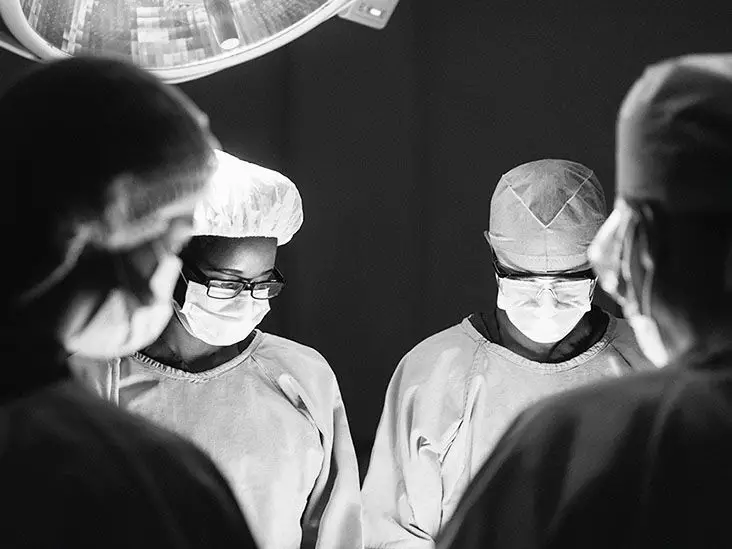Thyroid cancer surgery, primarily known as thyroidectomy, stands at the forefront of medical interventions for thyroid cancer. As an intricate procedure involving the removal of various portions of the thyroid gland, it embodies hope and healing for thousands of individuals diagnosed with this condition. Each year in the United States, approximately 45,000 new cases arise, suggesting a growing need for awareness and understanding of thyroid health and treatment options. The thyroid, a butterfly-shaped gland located at the base of the neck, plays a pivotal role in regulating crucial bodily functions through hormone production.
Thyroid cancer develops as a result of abnormal cell growth within this gland, forming tumors that can range from slow-growing, easily treatable types to more aggressive manifestations. Surgery remains the primary course of action, offering not just a chance for recovery but also a potential cure. Depending on factors such as the type and extent of cancer, the surgery could involve either a lobectomy—a partial removal of the gland—or a total thyroidectomy, which encompasses the complete excision of the gland.
Understanding the Surgical Process
The complexities of thyroid cancer surgery underscore the importance of meticulous planning and execution. Surgeons perform these operations under general anesthesia through a carefully placed incision in the neck, a technique that has evolved with advancements in technology. In some cases, minimally invasive procedures have emerged, allowing for reduced scarring and accelerated recovery times. During the operation, surgeons not only remove the affected thyroid tissue but also assess nearby lymph nodes to ensure no cancerous cells have spread beyond the gland.
To safeguard vital functions, such as voice control and calcium regulation, surgeons utilize nerve monitoring technology that aids in the identification and preservation of the recurrent laryngeal nerve and parathyroid glands. This informed approach helps to minimize risks commonly associated with thyroid surgery, including changes in vocal quality and calcium imbalances.
Diagnosis: The Foundation for Effective Treatment
The journey towards a thyroid cancer diagnosis often begins with a comprehensive physical examination followed by an array of diagnostic tests. Blood tests to analyze thyroid function, imaging studies like ultrasound or CT scans, and fine needle aspiration biopsies play critical roles in confirming the malignancy. Physicians systematically assess the stage of cancer to develop a treatment plan tailored to individual circumstances, acknowledging that every patient’s experience is unique and necessitates personalized care.
Risk factors such as a history of radiation exposure, specific hereditary conditions, and family histories enrich the dialogue surrounding this disease. Importantly, public discussions about these factors can lead to increased awareness and early detection, vastly influencing outcomes. The potential for early intervention highlights the need for ongoing education about thyroid cancer signs and risk factors.
Navigating the Road to Recovery
Post-surgery, the recovery process is essential to restoring health and well-being. Most patients can expect to stay in the hospital for at least one night post-operation, primarily for monitoring and pain management. Subsequently, they are advised to arrange for assistance as they transition back to daily life. Recovery entails more than physical healing; it requires adjustments in lifestyle, including potential lifelong thyroid hormone replacement therapy for those who undergo a total thyroidectomy.
During the first week, patients focus on rest, managing pain, and gently moving their necks. As recovery progresses, they are encouraged to gradually resume their daily activities within a protective framework against heavy lifting or strenuous exercise. This tailored approach ensures that individuals regain their strength and mobility while minimizing complications.
Surprisingly, many patients report that their neck incision fades significantly over time, with the possibility of reducing its appearance through skin massage. Voice changes might occur temporarily due to surgical trauma, but most of these issues resolve within weeks, reinforcing the importance of patience and support during this critical healing phase.
The Empowerment of Informed Choices
Understanding the intricacies of thyroid cancer surgery invites patients to engage actively in their treatment journey. The experience of thyroid surgery can be transformative, offering not only a tangible path to better health but also a newfound appreciation for bodily autonomy and resilience. Each individual’s proactive decision to gather information, seek second opinions, and share their experiences can foster a supportive community that empowers others facing similar challenges.
In making empowered choices about their health, patients can navigate the intricate landscape of thyroid cancer treatment with greater confidence. By fostering open conversations with their healthcare teams, individuals can discern the most appropriate paths to healing, weighing the benefits against potential risks. Ultimately, this journey is about reclaiming agency, fostering resilience, and recognizing the profound strength within each patient to face and overcome the challenges that arise along the road to recovery.

